
 Your Mission…
Your Mission…
To become a wildlife photographer during your visit to Billy Frank Jr. Nisqually National Wildlife Refuge. Take time to find wildlife big or small and observe their habits and behaviors as you take photos. Explore the trails to find different kinds of wildlife in the different habitats of the Refuge. Remember that wildlife is all around you!
You may find frogs hiding right on the trails, a bald eagle soaring high above, or a cryptically colored creature blending in with it’s surroundings… it’s up to you to be a keen observer to discover the amazing wildlife species we share our planet with! Send us your favorite photo to complete this mission.
Billy Frank Jr. Nisqually National Wildlife Refuge is one of over 560 National Wildlife Refuges throughout the United States managed by the U.S. Fish & Wildlife Service.
Know Before You Go:
- Refuge trails are open every day from sunrise to sunset.
- Binoculars are a great tool to bring with you for your visit!
- No Pets. The Refuge is set aside for the protection and preservation of wildlife. Please leave your pet at home. Do not leave your pet in the vehicle in the parking lot.
- Entrance Fee. The daily entrance fee is $3.00 per four adults. Kids 16 and under are free. Entrance fee payments are cash or check only and can be made at the entrance fee kiosk near the Norm Dicks Visitor Center. Passes that cover the entrance fee for the passholder and three additional adults include: Any of the America the Beautiful – National Parks & Federal Recreational Lands Passes or the Federal Duck Stamp.
- Grab a refuge brochure when stopping by the entrance fee kiosk. Here you’ll find a trail map and more information about the Refuge.
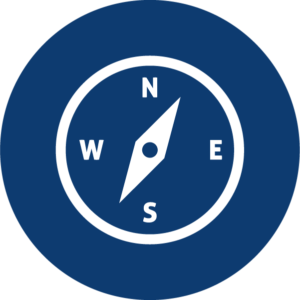
 About the Refuge
About the Refuge
In 1903, President Theodore Roosevelt established the first national wildlife refuge. The refuge system protects some of our country’s most iconic ecosystems and the fish and wildlife that depend upon them. Each refuge targets the conservation of native species that are dependent on the land and waters of its area. The US Fish and Wildlife Service manages these lands by working with others, to conserve, protect and enhance fish, wildlife, plants and their habitats for the continuing benefit of the American people.
Billy Frank Jr. Nisqually National Wildlife Refuge conserves over 3,000 acres and was established in 1974 through a grassroots effort led by local community members to protect the critical habitat found where the Nisqually River meets Puget Sound.
What activities can be found at the refuge? Hiking, bird and wildlife watching, wildlife photography, environmental education, fishing, and hunting all allow visitors to learn more about the natural world and the importance of these protected places that are rich in beauty and biological diversity.

 Twin Barns Loop Trail
Twin Barns Loop Trail
This mile long loop trail follows the boardwalk through woodlands, grasslands, and freshwater marshes, past the Twin Barns observation platform, ending back where it starts at the Norm Dicks Visitor Center. A map of the Twin Barns Loop Trail, and all other Refuge trails can be found here.
There are four spur trails off the main trail: the Riparian Forest Overlook, the Nisqually River Overlook, the Twin Barns Observation Platform, and the Estuary Trail.
Can you find three species of trees that are deciduous, meaning they shed their leaves every fall? Trees you will see are red alder, big leaf maple, and black cottonwood.
Can you see how their leaves differ?
Who do you think would make their homes up high in the leaves? Many migrating songbirds build their nests high in the tree canopy in the spring. Explore this series of videos and see if you can identify any of the birds singing as you walk the trail.
Note: Playing bird calls and songs can disturb wildlife. While on the trails, please use headphones to minimize your impact on wildlife.
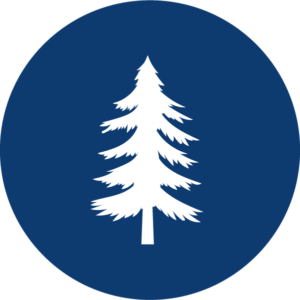 Riparian Forest Overlook: Home to the Black Cottonwood
Riparian Forest Overlook: Home to the Black Cottonwood
Take the short spur to the Riparian Forest Overlook to visit one of the rarest forest types of our region – a tidally influenced riparian forest. This forest follows next to the Nisqually River, the tall trees providing shade to keep the river’s water cool.
The mouth of the river, where it meets the salt water, is near and the tidal cycles of Puget Sound cause the river’s water to rise and fall. To learn more about tides watch this short video.
Black cottonwoods love the wet soils here. They grow straight and tall and can reach 100 feet in height before their 100th birthday!
Can you identify its heart shaped leaves? In spring, you will see its cottony seeds blowing in the wind.
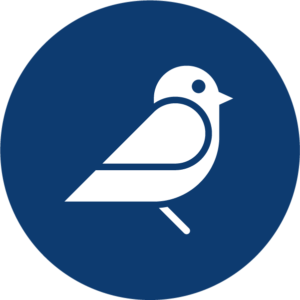
 Red Breasted Sap Sucker
Red Breasted Sap Sucker
As a nature detective, see if you can find evidence of what animals live here.
Here are some clues:
- Rows of holes on a tree will show where I’ve been.
- I delight in eating sap and insects trapped within.
- With my X-shaped feet I cling to trunks of trees.
- Next time you’re out walking stop and say hi please!
Who am I? I’m a Red-Breasted Sapsucker!
Have you seen my holes? Or heard me calling or softly drumming? Remember, while on the trails, please use headphones to minimize your impact on wildlife.
What other animal evidence can you find? Animals that may be seen here include songbirds, owls, woodpeckers, deer, beaver and river otters!
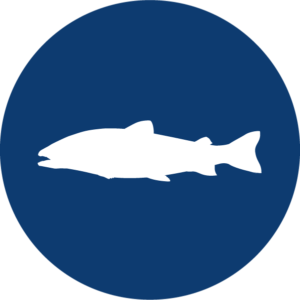
 Nisqually River Overlook
Nisqually River Overlook
The Nisqually River is born out of the Nisqually Glacier on Mount Rainier, flowing 78 miles all the way to its mouth where it empties into Puget Sound and forms the Nisqually Estuary.
The river is home to seven species of Pacific salmon including cutthroat and rainbow trout, steelhead and bull-trout!
Salmon are anadromous, meaning they live part of their life in both freshwater and saltwater. They are hatched in freshwater then spend most of their lives in the saltwater feeding on the oceans’ rich food. When mature, they migrate or return to freshwater streams and rivers to spawn, starting the lifecycle all over again.

 People of the River – People of the Grass
People of the River – People of the Grass
The Nisqually watershed is the ancestral home of the Nisqually tribal people. They have lived in this watershed for over 10,000 years. The Nisqually have always been a fishing people relying on the salmon as a food source and as a foundation of their culture.
The refuge is named for one of the Nisqually tribes most honored leaders, Billy Frank Jr. Billy Frank Jr. spent his life defending tribal treaty rights and protecting salmon and their habitat. Watch this animated short video featuring Billy Frank Jr. as he takes you up the river sharing life on the river.

 Tracks in the Mud at Low Tide
Tracks in the Mud at Low Tide
If the tide is low, scout out the exposed mud along the river’s edge. Can you find any animal tracks?
Solve this riddle!
- I walk in a pattern of 2 by 2 tracks.
- If you’re a good scout you’ll be able to follow my path.
- I am an omnivore, which means I eat more than just meat.
- Fruits, nuts, and bird eggs are some of my favorite treats.
Have you seen my tracks? What am I? Raccoon!

 Freshwater Wetlands
Freshwater Wetlands
Explore the west side of the Twin Barns Loop Trail wetlands. These wetlands were created by the Refuge to provide habitat for many of the migratory birds that call the Refuge home for part of the year.
Wetlands are areas where water ponds or covers the soils for part or all of the year. Wetlands provide homes for many animals and can be found all over the world.
At the Refuge, huge flocks of geese and ducks can be found resting and feeding throughout the wetlands during the fall and winter. One common visitor is the cackling goose which can be easily confused with the larger Canada goose.
Did you know that over 200 species of birds have been observed at the Refuge? Many of them can be found in and around these wetlands and come from as far away as Alaska or South America! In the spring and summer, migrating songbirds can be seen feeding, singing, and nesting. See if you can find the bright feathers of a songbird. Have you identified any?
Check out the Refuge’s list of birds here!
![]()
 The Invading American Bullfrog
The Invading American Bullfrog
Did you know that bullfrogs were brought to the western United States from the eastern states, to be farmed for food? Bullfrogs are not native to Washington and are considered an invasive specie.
What makes a specie invasive? Invasive specie grow and reproduce quickly, spreading fast so that they outcompete and displace the native specie, upsetting nature’s balance. An invasive specie can be a plant or animal, or any organism that is introduced to an area where they do not naturally live. These species may cause harm to the environment, economy or to human health.
Bullfrogs are the largest specie of frog in North America, growing up to 8 inches long. Female bullfrogs lay egg-masses that are like thin sheets of jelly that spread out in the wetlands. One egg mass can contain up to 120,000 tiny eggs! The bullfrogs larvae or tadpole takes 2-3 years to turn into an adult. Bullfrog adults and their large tadpoles are predators with a huge appetite eating almost anything they can catch. This includes other frogs, many amphibians, turtles, and even birds. Bullfrog predation and disease are one cause for the decline of many species of amphibians in our area.
Can you identify any bullfrogs in the ponds? Look for their bright green color and the large ear drum on the side of their head. Or, you may hear their booming call or their squeak as they jump into the water.
Check out this website for more information or to hear their calls.
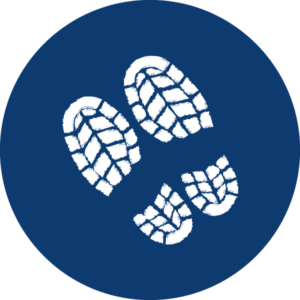
 Birds of Prey
Birds of Prey
Birds of prey, or birds that eat animals for food, like owls, hawks falcons and eagles, can be spotted hunting throughout the Refuge’s wetlands and open spaces.
See if you can spot a northern harrier flying slow and low over the area. Harriers are a bird of prey that have curved beaks and sharp talons for catching prey. They also have excellent hearing and listen for small mammals and other prey as they slowly soar over the wetlands. The Refuge is one of the few open habitat areas where northern harriers may be seen.
These unique birds have an owl-like face and females have a distinctive white “rump patch” on the tops of their tails. See how many you can count!
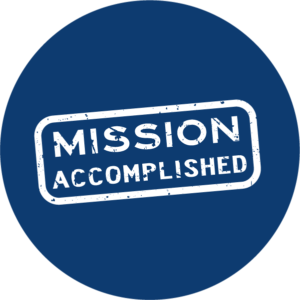 Congratulations!
Congratulations!
You have completed your mission to become a wildlife photographer during your visit to Billy Frank Jr. Nisqually National Wildlife Refuge. Don’t forget to login to the Goose Chase App and submit your photo for this mission to collect your park specific sticker!